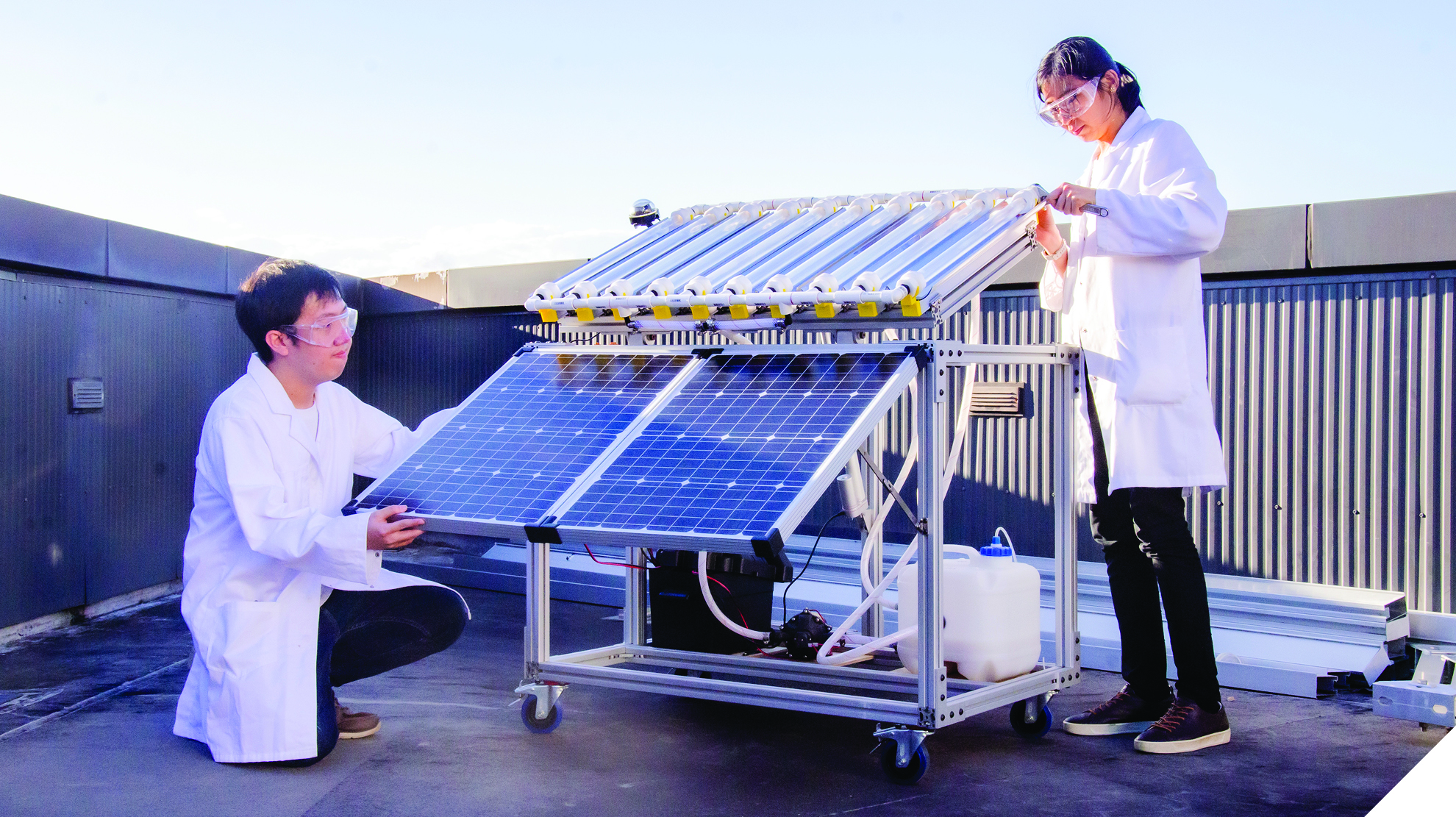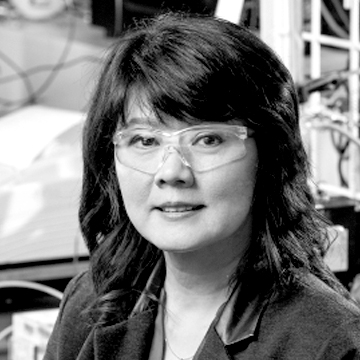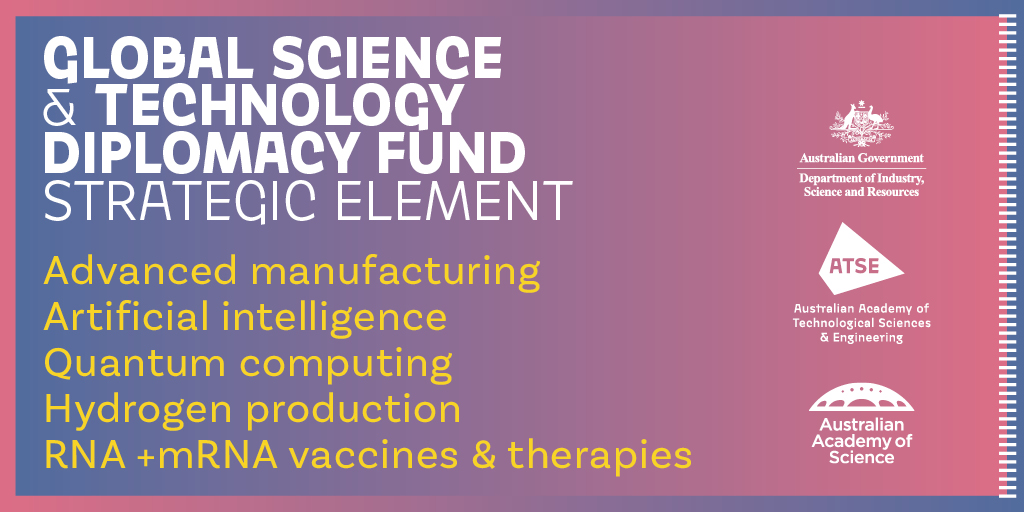Advancing sunlight-to-hydrogen conversion for a sustainable future
Sunlight is an abundant renewable energy source vital for decarbonisation, energy security and national sovereignty. Funded by the Global Science & Technology Diplomacy Fund.
Sunlight is an abundant renewable energy source vital for decarbonisation, energy security and national sovereignty. Funded by the Global Science & Technology Diplomacy Fund.
Established to grow international collaboration, enhance Australia’s standing as a science and technology leader, and drive innovation and commercialisation in priority areas, the Global Science & Technology Diplomacy Fund is a grant scheme supporting discovery around the world. Delivered by ATSE in partnership with the Australian Academy of Science, and funded by the Department of Industry, Science and Resources, these grants are opening up a world of science and technology enterprise for Australian researchers and innovators.
By generating renewable feedstocks—such as green hydrogen, ammonia and methanol—solar-driven technologies can support the development of alternative fuels, reducing reliance on finite fossil resources and imported energy. Strengthening domestic fuel production enhances long-term energy security and reinforces national sovereignty. It reduces dependence on global supply chains and mitigates geopolitical risks.
Moreover, as demand for clean energy solutions grows worldwide, Australia is well-positioned to become a major exporter of renewable fuels, leveraging its vast solar resources to support both domestic and international decarbonisation efforts.
Photocatalysis: direct sunlight-to-hydrogen conversion
Hydrogen can be produced from solar energy through PV-electrolysis, where solar electricity powers water electrolysis to generate hydrogen. However, this method requires expensive infrastructure, making it costly to scale.
Photocatalysis offers a simpler, more cost-effective alternative by converting sunlight directly into hydrogen without the need for solar PV, electrolysers, or a complex balance of plants.
In photocatalysis, a semiconductor catalyst absorbs sunlight and directly splits water into hydrogen and oxygen. The technology has already been demonstrated at a 100m2 scale, showing its potential for larger applications.
Beyond water splitting, photocatalysis can also produce hydrogen while converting organic waste—such as agricultural biomass and plastics—into value-added chemicals. This process, known as photoreforming, enhances sustainability by simultaneously generating clean hydrogen and alleviating a major waste problem.

The Challenge: boosting efficiency
Despite its promise, commercialisation of photocatalysis is hindered by low solar-to-hydrogen efficiency. Current systems typically achieve only 1–2% efficiencies, making hydrogen production too expensive for widespread adoption.
Our techno-economic assessment suggests that if solar-to-hydrogen efficiency surpasses 5%, photocatalysis could produce hydrogen for around $2 per kilogram—a target for commercial viability.
A global push to overcome the efficiency barrier
Achieving this leap in efficiency requires global collaboration. The solar PV industry has shown how collective scientific advancements can dramatically improve efficiency and reduce costs. Solar hydrogen technology has the potential to follow a similar trajectory, particularly in Australia, which benefits from abundant sunshine and a strong track record in solar energy research.
Led by ATSE Fellow Scientia Professor Rose Amal from UNSW Sydney, with Dr Denny Gunawan as a key researcher, the new Sunlight-to-Hydrogen Hub — funded by the Global Science and Technology Diplomacy Fund — brings together experts worldwide. International partner institutions include Universiti Malaya (Malaysia), Institut Teknologi Bandung (Indonesia), Nanyang Technological University (Singapore), and the University of Tokyo (Japan), with Australian partners at the University of Newcastle and RMIT University.
The hub will coordinate global research efforts to accelerate progress in photocatalytic solar hydrogen production. It will focus on three key areas: Photocatalyst Discovery, which involves discovering and optimising new photocatalyst materials to enhance efficiency; System Engineering, which focuses on developing scalable and efficient photoreactors for real-world applications; and Techno-Economic Studies, which aims to develop an open-source cost analysis tool to assess feasibility and guide commercialisation.
Using advanced computational tools, experimental facilities, and augmented intelligence, the hub aims to develop scalable, low-cost systems with improved efficiency, paving the way for industrial adoption and commercialisation.
More than research: building an innovation ecosystem
Beyond scientific breakthroughs, the hub will play a key role in building a strong innovation ecosystem for solar hydrogen production. Through strategic partnerships with leading companies, the hub will help build a robust ecosystem for renewable energy innovation and accelerating commercialisation. This initiative will not only enhance Australia’s capacity in solar hydrogen technology but also create new opportunities in the growing green energy sector.
Importantly, the hub will empower the next generation of scientists and engineers by providing targeted mentorship, training and exchange programs. The hub is committed to building a diverse talent pipeline to drive future advancements in solar hydrogen technologies. By uniting global expertise and resources, this initiative represents a significant step toward turning sunlight into a clean, cost-effective energy source for Australia and the world.

Established to grow international collaboration, enhance Australia’s standing as a science and technology leader, and drive innovation and commercialisation in priority areas, the Global Science & Technology Diplomacy Fund is a grant scheme supporting discovery around the world. Delivered by ATSE in partnership with the Australian Academy of Science, and funded by the Department of Industry, Science and Resources, these grants are opening up a world of science and technology enterprise for Australian researchers and innovators.
